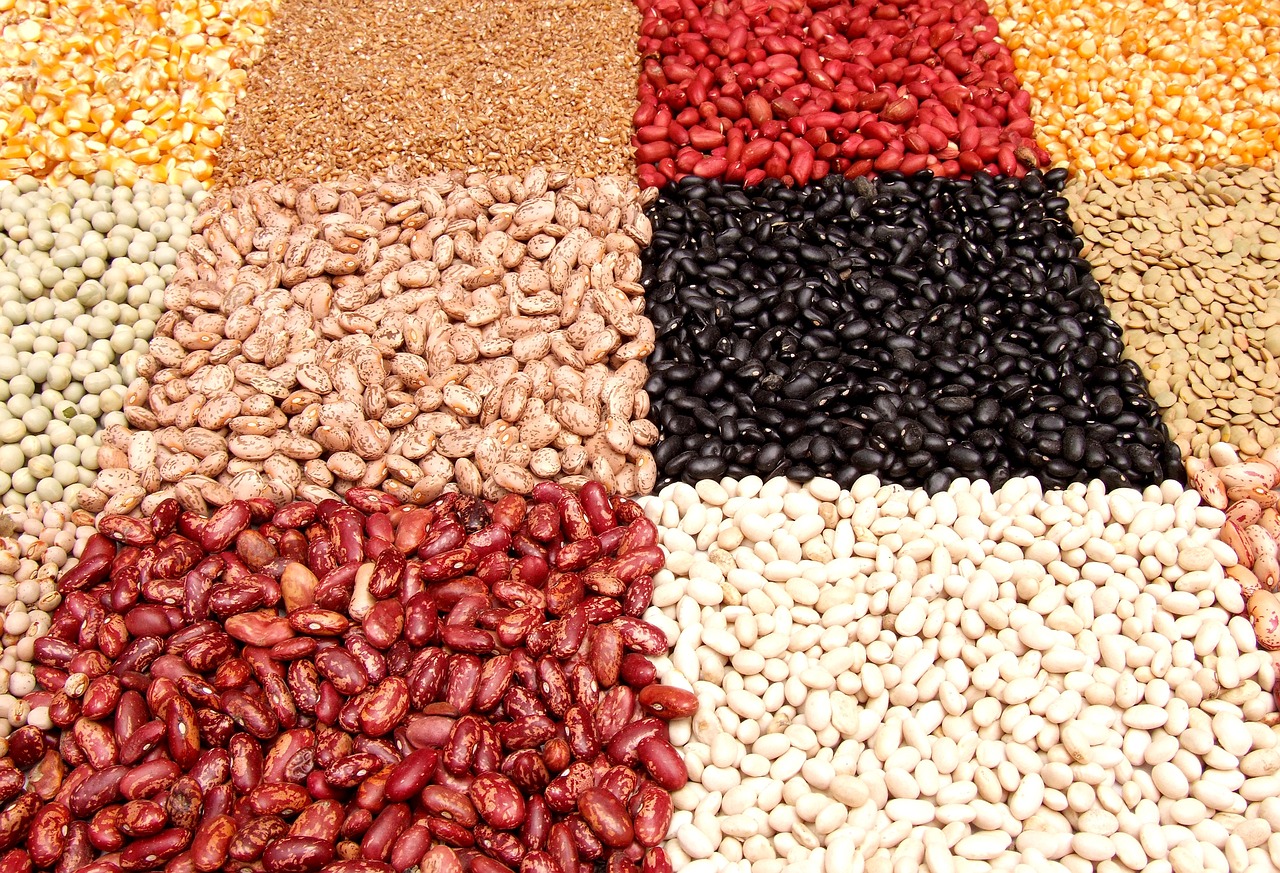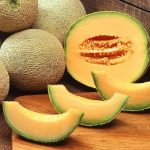What are Legumes?
Legumes such as beans, lentils, and peas contain fruits and seeds stored in a pod, which is consumed by humans. This family of leguminosae provides us with many edible products. Legumes stand out from other food sources due to their abundance of nutritional properties, like protein, fiber, carbohydrates, and various vitamins and minerals. They are often called pulses.
Why do vegans eat legumes?
Vegans are known to eat a lot of legumes in their diet for a number of reasons:
- They are a very good source of protein.
- They are a whole food.
- They are found in a large number of cuisines around the world.
- They have a firm chewy texture which partly replicates the feel of meat in some dishes.
- They are extremely versatile. They are a common ingredient in so many dishes, and can replace meat in others, but they can be turned into non dairy milk, meat replacements like tofu and tempeh, dips, an addition to smoothies and made in a paste and put in burgers.
- They can be very cheap. Legumes are generally very cheap especially if you buy them dried and in bulk. They are usually cheaper than the cheapest cuts of meat and usually easily accessible.
- They are better for the environment than meat: Compared with meat, legumes have a much lower GHG emissions than animal sources of protein.
- They keep well. Canned beans last for a very long time and dried beans require no refrigeration although you should make sure they are stored correctly.
Why are legumes popular?
It has been demonstrated that legumes have been harvested for over 5,000 years, supplying numerous people around the world, especially those living in poverty, with essential calories.
Legumes are incorporated in many of the global culinary traditions.
- Central Asia and the subcontinent
- Many Middle Eastern
- Southern Europe
- Many Central and South American countries
- Many African countries
So, basically, most of the world!
Where to buy legumes and how much do they cost?
Do you have any idea that beans and lentils are typically quite inexpensive? The most inexpensive option is to purchase the items in their dried version and in larger quantities. You can find beans, split and whole peas, and lentils in many supermarkets and health food stores. These legumes are typically stocked on the shelves in the back of the store in large bags.
Canned beans and lentils cost a bit more, but give you the most value for your money. Canned goods are already cooked so you just have to open the can and you’re good to go! Some grocery stores also offer prepared beans or even frozen beans if that is what you prefer.
Other places to buy legumes:
Indian grocery stores
The grocery stores in India offer a vast selection of different types of legumes, both familiar and exotic. The prices are always great too!
Wholesale
If you’re a fan of beans and have room to put them away, Costco is the ideal place to get them in large quantities. They provide dehydrated beans for incredibly low costs together with cans of them in bundles of 12 per pack. This retailer has got you covered when it comes to satisfying your cravings for lentils and beans, as their products can be easily accessed online or at a shop near you!
Specialist stores
A few of the more pricey heirloom legumes exist, however, most types of legumes are quite economical. Due to their limited usage and lower returns, these investments are not as popular. Most recipes call for the more widely available legumes.
16 Types of Legumes & How To Use Them
Gain knowledge about a diversity of legumes, such as lentils and diverse types of beans, and learn how to prepare them!
Lentils are small, lens-shaped legumes that grow in pods. In India, they are an essential item, which makes delicious and nutritious stews, soups, and curries. Still, lentils are immensely popular worldwide.
At the minimum, there are over a dozen distinct kinds of lentils, varying in size and color, yet they are all cooked using the same approach: low and slow heat over a medium flame until they are soft. You could choose to have the vegetables as they are or blend them to make a creamy sauce.
Yellow-green seeds that have different sizes. It is high in protein and carbohydrates. They do not require very long cooking times. It is used in soup, and vegetable dishes.
-
Peanuts
It is often thought incorrectly that peanuts are nuts, when in fact they are actually legumes. Originating in South America, these ingredients are essential for both sweet and savory dishes. This is a very often seen legume considering that peanuts are savored as an appetizer, in candy bars, as a smooth paste, and as a garnish for salty dishes like Pad Thai.
Peanuts have a distinctive crisp shell, which encloses its healthful seed casing. You’ll find peanuts whole or thoroughly stripped. Cook them by boiling or roasting, enjoy them while in their shells, or include some peanut oil to your meal plan!
Soybeans are widely eaten in East Asia, both in the form of steamed dishes and when fried pan-style in a variety of dishes. The most captivating aspect of this legume is its ability to be used in a variety of ways. People take advantage of soybeans to produce soy milk, soy sauce, flour, soybean oil and tofu. There are dozens of uses for the prevalent legume.
It is very rich in protein and fat. It is incorporated into a multitude of dishes and recipes and is found in the form of fresh sprouts, flour, bread, sauce, pasta, oil, milk and many other items. The latter can be helpful if someone has a food intolerance. A spin-off of this process is the production of soy cheese, a kind of cheese derived from soybeans.
Indulge yourself with some soy ice cream, some soy yogurt, or make yourself a veggie burger patty from mashed, roasted soybeans. This legume is among the most internationally devoured, and plenty of the things you enjoy eating are made of it.
-
Chickpeas
The legume known as chickpeas, which are round in shape, have a mild flavor but are packed with protein. It is not unusual to put chickpeas in stews and soups, but you can also blend them to make hummus. Chickpea flour has its uses, too, including making falafel.
Aside from that, roasted chickpeas make a yummy treat, and they can be included in salads, stews, and curries. Surprisingly, in the Philippines, a dessert made from chickpeas soaked in sugary syrup is quite popular!
-
Green Beans
Green beans are an exceptional form of vegetable – the immature enclosures of a diversity of pulses and pea plants that are eaten prior to the beans, which are firmly enclosed in the verdant exterior, become mature and rigid.
These unripe pea pods can be firm or tender. When it comes to green beans, we typically refer to types that have a tender enough pod to be eaten as-is.
Green beans can be included in stews and casseroles; they can be mixed with rice or mashed to make gravies. Green beans are also fantastic savory snacks.
-
Fava Beans
Also referred to as broad beans, fava beans are amongst the most delicious kinds of pulses. This type of bean, as its name implies, is wide and large, originating in the Mediterranean Basin but now eaten throughout the world.
People prize fava beans for their earthy flavor. You can prepare them through toasting, boiling, eating as is, or mashing them. Very few plants are as significant on all five continents like legumes are. Fava beans provide extraordinary nutrition; they have the strongest proportion of proteins to carbohydrates of any type of legume.
-
Kidney Beans
Legumes are the most numerous type of bean, with more than 40,000 varieties found around the world. One of the beans most accessible to the public is the kidney bean, despite the fact that a lot of these varieties of beans are commonly eaten. You can buy it dried, and then boil it to make it suitable for salads. It lowers blood sugar and high blood pressure. It is good for anemia.
These beans have a reddish tint and possess a starchy consistency, and their form is that of a kidney. The two most popular types of kidney beans are the red and speckled varieties, and they are typically cooked under high pressure and can be served as-is or mashed. Legumes are a fundamental provider of proteins, predominantly in Latin America. Needless to say, the meaty legume is incredibly nutritious.
Shell beans are widely used. It is also known as Roman beans. Unsaturated fatty acids are high. It is rich in protein. It protects heart health. It is antioxidant source.
-
Cannellini Beans
White beans, or Cannellini beans, are the same as kidney beans. This phenomenon is most commonly seen in Italy, especially in the Tuscan region, but is also heavily consumed throughout the Indian subcontinent.
Cannellini beans become smooth and starchy, making them the perfect ingredient to put in soups and salads. The classic minestrone vegetation soup uses the mildly sugary bean to give it structure, visual appeal, and taste. Be careful not to confuse cannellini beans with the similar-looking white navy beans.
-
Split Peas
Split peas are dried, peeled, and split peas. Frozen peas are more widespread than ordinary fresh peas since they can be stored for a longer period of time. Split peas have a stronger taste than fresh peas, making them great for making potions like creamy soups and vibrant purees.
Split peas of a yellow shade are a well-known snack, yet they are also utilized to prepare pudding. Different cuisines around the world make use of the flavorful legume, both in sweet and savory recipes, from Caribbean dishes to Greek island fare. It’s likely that if you have ever sampled India’s well-known dal dish, it was prepared with split peas instead of lentils.
-
Black-Eyed Peas
This legume, which is of medium size, is eaten around the globe and it’s simple to identify by its black dots. Originally from Africa, black-eyed peas adapted well to their new surroundings in America. A widely used legume found in a range of traditional American dishes such as Hoppin’ John, can also be enjoyed in other types of food as well, including soups, salads, stews and broths.
It grows in South America. This product is rich in vitamins A and B, folic acid, calcium, phosphorus, copper, and iron, as well as other mineral components that may help facilitate reduction. It is good for the heart and blood vessels. It is used in salads.
As you can observe, there is a plethora of legumes available, and they all provide essential nutritional benefits. Make sure to include legumes in your diet frequently for optimum health.
-
Navy Beans
Also referred to as a haricot, Boston, white pea, or pea bean, the pearl haricot bean is a common type of legume.
When purchasing canned baked beans, the main ingredient is navy beans, which are the smallest of the more widely known white bean types including Great Northern, Cannellini and baby lima. A lot of soups and salads incorporate them, and they are often seen in Mediterranean type food. They measure 1cm and are off-white in hue. Often mistaken for Great Northern Beans but are smaller.
-
Black Beans
Turtle beans, caviar criollo, and frijoles negros are all other names for this type of bean.
For millennia, Central and South America have taken advantage of black beans. These little glittery legumes are utilized in soups, for instance burritos with rice and beans or Cuban black bean soup.
-
Pinto Beans
(also known as: frijol pinto, mottled kidney bean)
Uncooked pinto beans display a pretty speckled pattern, morphing into a light brown pink shade when cooked. They are used often in American cuisine. The skins are more delicate, which makes pintos superb in dishes that are mashed like refried beans and chilis. Pinto beans can be used for numerous of things and can easily be located in stores. The flavor of these beans is quite neutral, making them an ideal substitute for other types of beans in recipes.
-
Great Northern Beans
(Also known as large white beans)
People often get Great Northern Beans mixed up with Baby Lima Beans, Navy Beans, or Cannellini Beans. Compared to navy beans, they are somewhat bigger, yet they are smaller than baby lima beans and cannellini beans. They are frequently utilized in cassoulet as well as many other recipes, especially Mediterranean soups such as minestrone and salads. Due to their hue, they are frequently added to shakes to offer a protein boost.
-
Adzuki Beans
These legumes, also referred to as azuki, red beans, red mung beans, or aduki beans, are a type of small, reddish-brown beans.
This particular bean has its origins in the Himalayas and eastern Asia. While it is not as celebrated as some of the other beans we have to offer, it is widely used in Asian desserts such as mooncakes or steamed buns, as well as Japanese recipes. Their dimensions and beautiful reddish hue are very attractive and they boast a delightful feel. It should be noted that there are Adzuki beans of other colors, although red is the most widely seen.
-
Whole Urad Bean
Urad dal, also known as udad dal, urd bean, urd, urid, black matpe bean, black gram, black lentil, and masha, is a type of lentil.
These beans may not be commonly employed, yet they are frequently used in Indian cooking, particularly in dishes such as Dal Makani and other lentil-based recipes.









